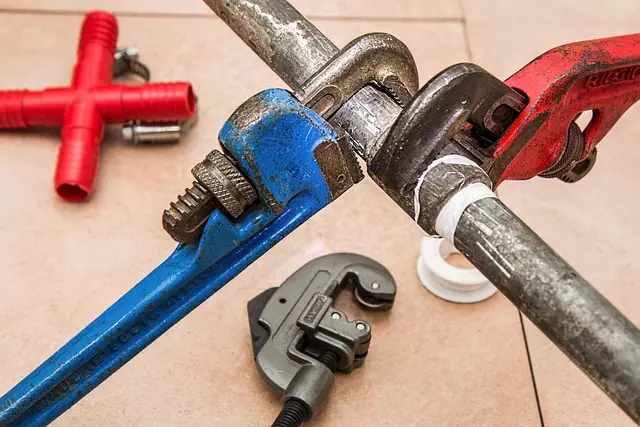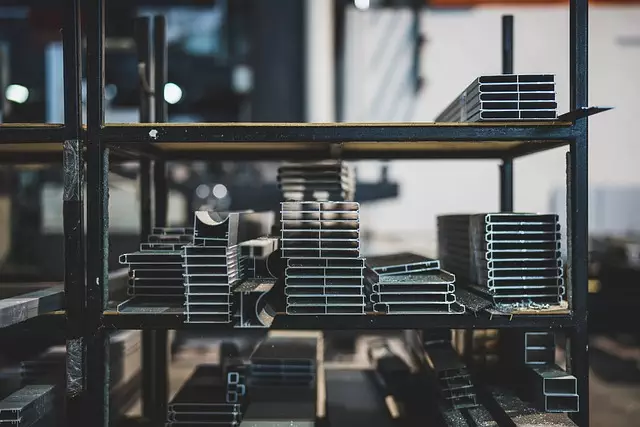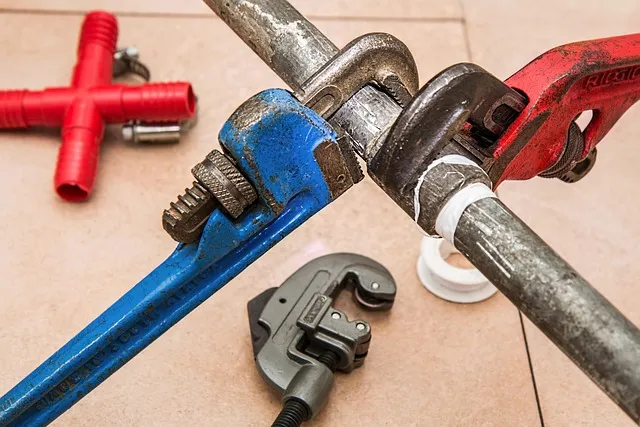Pipe repairs are essential for maintaining plumbing systems, addressing issues like leaks, bursts, and clogs caused by various factors. Regular maintenance prevents emergencies, while quick action on detected problems saves costs and minimizes damage. DIY solutions help with minor issues, but complex problems require professional plumbers to ensure long-term system reliability. Key tools and maintenance steps, such as insulation, leak detection, corrosion prevention, and drain cleaning, are crucial for avoiding costly repairs.
In the face of unexpected pipe issues, swift action is crucial. Emergency pipe repair isn’t just about stopping a leak; it’s about mitigating damage and ensuring your home or business remains operational. This comprehensive guide delves into understanding common pipe problems, assessing repair urgency, and equipping you with essential tools for on-site fixes. Learn the step-by-step process of temporary repairs, when to call professionals, and proactive maintenance tips to prevent costly pipeline failures. (Keywords: Pipe Repair)
Understanding Common Pipe Issues and Their Causes

Pipe repairs are often necessary due to various common issues that can arise in plumbing systems. Understanding these problems and their causes is an essential first step for homeowners and property managers. Leaks, for instance, can result from worn-out joints, corrosion, or damage caused by extreme temperatures or ground movement. Burst pipes, on the other hand, are typically attributed to freezing, excessive water pressure, or inadequate insulation. Clogs are another frequent issue, often caused by foreign objects, mineral buildup, or tree roots infiltrating the pipes.
Regular maintenance can help prevent these issues, but prompt action is crucial when they occur. Early detection of leaks and addressing them before they escalate can save significant costs and minimize damage. Similarly, understanding the causes of pipe failures allows for targeted solutions, ensuring long-term reliability and efficiency of plumbing systems.
Assessing the Urgency of Emergency Repairs

When a pipe bursts or leaks, assessing the urgency of emergency repairs is crucial. The severity of the situation and potential damage determine the need for immediate action. A minor leak might be manageable, allowing for scheduling repairs during less busy periods. However, a burst pipe can cause significant water damage in a short time, necessitating quick intervention to minimize harm.
Factors like the location of the leak, accessibility, and available resources also play a role. Underground or hard-to-reach pipes may require specialized equipment, delaying repairs. In contrast, visible and easily accessible leaks can be addressed faster. Prompt action is vital for both Pipe Repair scenarios to prevent further complications and costly damages.
Essential Tools and Materials for On-Site Repairs

When it comes to emergency pipe repairs, having the right tools and materials on hand is crucial for a successful and efficient fix. The essential items for on-site repairs include a variety of fittings, such as couplings, elbow joints, and tees, which can replace damaged sections or redirect water flow. A good set of pliers, both adjustable and needle-nose, is vital for gripping and manipulating pipes securely.
Additionally, a supply of duct tape, plastic sheeting, and temporary clamps allows for quick and effective sealing of leaks until more permanent repairs can be made. A multi-tool or utility knife ensures the ability to cut through pipe insulation or other obstructions. Lastly, having access to a pressure gauge can help identify water pressure issues, while a basic toolkit with wrenches and screwdrivers facilitates assembly and installation of new fittings. These tools empower homeowners and maintenance professionals to tackle pipe repairs swiftly and effectively, minimising water damage and disruption.
Step-by-Step Guide to Temporary Fixation Techniques

When faced with a burst or leaking pipe, time is of the essence. Before professional help arrives, know that there are temporary fixation techniques to stem the flow and prevent further damage. Start by isolating the affected area to stop water supply, if possible. Then, gather essential tools: duct tape, cloth or towel, bucket, and a piece of wooden board (for weight).
Apply a generous amount of duct tape over the leak, overlapping each layer slightly. Use the cloth or towel to absorb any residual water seeping through. Place a bucket beneath to catch any overflow. As a temporary measure, weigh down the duct tape with a wooden board to ensure it stays in place until help arrives. Remember, this fix is only for immediate relief; professional pipe repair services should be engaged as soon as possible to prevent further complications.
When to Call in Professional Plumbers for Comprehensive Solutions

Pipe repairs are a common household issue, but knowing when to call in the professionals is essential for comprehensive solutions. While small leaks or clogs can often be addressed by homeowners using basic tools and DIY methods, more complex pipe issues warrant the expertise of licensed plumbers.
Signs that it’s time to call in the experts include persistent or severe leaks, pipe bursts, mysterious water damage, low water pressure, or unusual noises coming from pipes. Additionally, if your plumbing system is old and outdated, or you’ve recently experienced frozen pipes, professional intervention is recommended. Plumbers have the specialized tools and training to assess and fix these issues swiftly and effectively, preventing further damage and costly repairs in the long run.
Preventive Measures: Maintenance Tips for Long-Lasting Pipes

Regular maintenance is key to preventing emergency pipe repairs. To keep your pipes in top condition, start by insulating exposed pipes, especially in colder climates, to protect them from freezing and bursting. Check for leaks regularly and address them immediately; even a small drip can lead to significant water damage over time. Keep an eye on corrosion, as it’s a common issue that can weaken pipe structures. Regular cleaning of drains with natural or store-bought cleaners helps prevent clogs, which can cause severe damage if left unattended.
Additionally, use a water softener to reduce mineral buildup inside pipes, extending their lifespan. Avoid pouring grease and other pollutants down the drain, as these substances solidify in cold temperatures, leading to blockages. Tree roots are another common pipe repair issue; install protective shields around pipes near trees or regularly inspect for signs of root intrusion. Lastly, stay updated on local water main replacement projects, as roadwork can disrupt nearby pipes.
